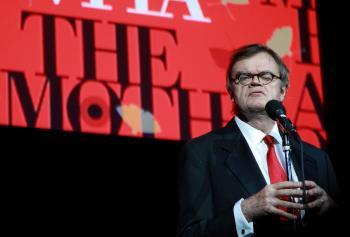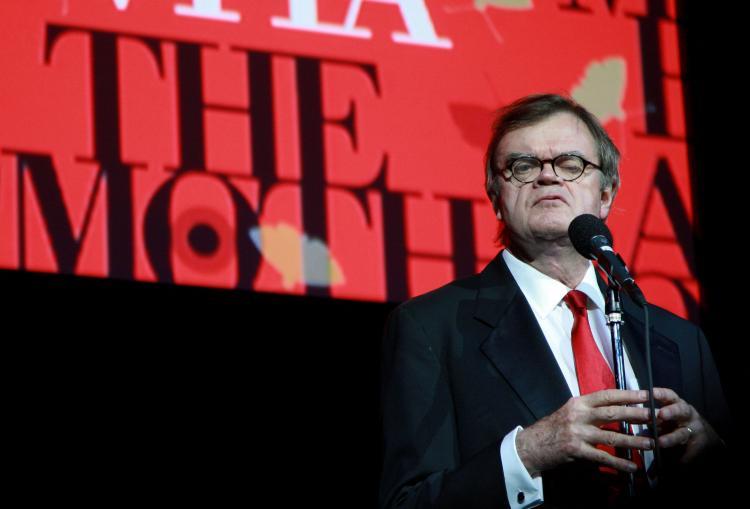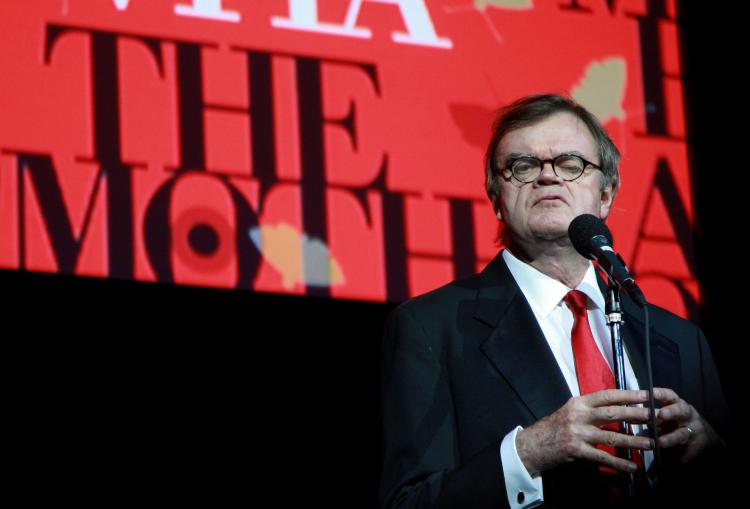The much beloved (and occasionally bemoaned) author/humorist Garrison Keillor recently announced that he will be retiring from his long running “A Prairie Home Companion” radio program in 2013. If you’re somehow unfamiliar with the decades old show, imagine a variety of folk music, mixed with spoofs of pre-World War II-era audio dramas, combined with a healthy dose of assorted Midwestern cornball anecdotes.
The program features a number of recurring characters and vignettes (a pair of cowboys and a film noir private eye struggling to cope with their apparent incongruencies to the modern world; an elderly couple overcoming their disappointment of life through the “natural mellowing agents” of a mood-altering ketchup, and so on). However, for many the high point of the two-hour weekly program is the Lake Wobegone monologue, in which Keillor’s sturdy baritone delivers the news from his fictional and impossibly idyllic central Minnesota hometown.
Although I was introduced to Keillor’s alternative universe in my early teens, it took some time to develop a taste for it. I hadn’t earned enough personal history 20 years ago to appreciate folksy yarns on nostalgic yearnings, much less jokes about them.
It took time for me to realize that Keillor’s program played upon the American love of looking back—back to childhood, back to a golden age when unselfish people worked hard and didn’t complain. It took time to realize he was using this as a reliable platform from which to comment on the desperate longings of modern life.
But the older I got, the more history I had at my disposal to romanticize, and the more sense Keillor’s radio world made. While the old-fashioned format Keillor employs is still quite a bit before my time, with advancing age I grow more familiar with the pull of nostalgia that the program has long parodied.
Although it sounds like a satirical storyline from one of Keillor’s broadcasts, at one time nostalgia was thought to be an illness.
From the late 1600s to the late 1800s, doctors believed that nostalgia was a disease of the imagination, responsible for a host of symptoms, including death. But we’ve since shaken free of those quaint notions, and now nostalgia seems as natural as breathing. Science even aims to prove that sentimentality is good for us.
A 2008 study from Sun Yat-Sen University concludes that nostalgia can counteract feelings of profound loneliness by giving the perception of social support, keeping anxiety and depression at bay. Researchers suggest that these nostalgic memories can be used as a therapeutic tool for creating a sense of human connection. However, this sentimental self-deception comes at a price.
“Nostalgic distancing sanitizes as it selects, making the past feel complete, stable, coherent, safe from ‘the unexpected and the untoward, from accident or betrayal’—in other words, making it so very unlike the present. The aesthetics of nostalgia might, therefore, be less a matter of simple memory than of complex projection; the invocation of a partial, idealized history merges with a dissatisfaction with the present,” observed Linda Hutcheon in her essay “Nostalgia, Irony, and the Postmodern.”
Perhaps it’s a symptom of growing older, but I can swear that our society possesses an even greater obsession with nostalgia than ever before. Maybe it’s because the constant connection to the Internet allows for easy access of concrete examples that reinforce memories that would otherwise remain vague and fleeting, or maybe we’re increasingly compelled toward a seemingly stable aspect of our past in an effort to steady ourselves against a world that’s changing much too fast.
In any case, while it’s fun to contemplate the “way it was,” it should never be at the expense of the “way it is.” Nostalgia may not actually be fatal, but it’s most certainly a delusion—a delusion that time can stand still, a delusion that the unusual circumstances of a favored decade could somehow exist forever, a delusion that an isolated and idealized aspect of our past holds the key to our future.
Nostalgia is clearly a fantasy, yet even the experts struggle to release their grip on this dream.
“I’m pushing forward, and also I’m in denial. It’s an interesting time of life,” Keillor told the AARP when he announced his projected retirement date. “I sure don’t want to make a fool of myself and be singing romantic duets with 25-year-old women when I’m 75. But on the other hand, it’s so much fun. And in radio, the lighting is right.”
[email protected]
The program features a number of recurring characters and vignettes (a pair of cowboys and a film noir private eye struggling to cope with their apparent incongruencies to the modern world; an elderly couple overcoming their disappointment of life through the “natural mellowing agents” of a mood-altering ketchup, and so on). However, for many the high point of the two-hour weekly program is the Lake Wobegone monologue, in which Keillor’s sturdy baritone delivers the news from his fictional and impossibly idyllic central Minnesota hometown.
Although I was introduced to Keillor’s alternative universe in my early teens, it took some time to develop a taste for it. I hadn’t earned enough personal history 20 years ago to appreciate folksy yarns on nostalgic yearnings, much less jokes about them.
It took time for me to realize that Keillor’s program played upon the American love of looking back—back to childhood, back to a golden age when unselfish people worked hard and didn’t complain. It took time to realize he was using this as a reliable platform from which to comment on the desperate longings of modern life.
But the older I got, the more history I had at my disposal to romanticize, and the more sense Keillor’s radio world made. While the old-fashioned format Keillor employs is still quite a bit before my time, with advancing age I grow more familiar with the pull of nostalgia that the program has long parodied.
Although it sounds like a satirical storyline from one of Keillor’s broadcasts, at one time nostalgia was thought to be an illness.
From the late 1600s to the late 1800s, doctors believed that nostalgia was a disease of the imagination, responsible for a host of symptoms, including death. But we’ve since shaken free of those quaint notions, and now nostalgia seems as natural as breathing. Science even aims to prove that sentimentality is good for us.
A 2008 study from Sun Yat-Sen University concludes that nostalgia can counteract feelings of profound loneliness by giving the perception of social support, keeping anxiety and depression at bay. Researchers suggest that these nostalgic memories can be used as a therapeutic tool for creating a sense of human connection. However, this sentimental self-deception comes at a price.
“Nostalgic distancing sanitizes as it selects, making the past feel complete, stable, coherent, safe from ‘the unexpected and the untoward, from accident or betrayal’—in other words, making it so very unlike the present. The aesthetics of nostalgia might, therefore, be less a matter of simple memory than of complex projection; the invocation of a partial, idealized history merges with a dissatisfaction with the present,” observed Linda Hutcheon in her essay “Nostalgia, Irony, and the Postmodern.”
Perhaps it’s a symptom of growing older, but I can swear that our society possesses an even greater obsession with nostalgia than ever before. Maybe it’s because the constant connection to the Internet allows for easy access of concrete examples that reinforce memories that would otherwise remain vague and fleeting, or maybe we’re increasingly compelled toward a seemingly stable aspect of our past in an effort to steady ourselves against a world that’s changing much too fast.
In any case, while it’s fun to contemplate the “way it was,” it should never be at the expense of the “way it is.” Nostalgia may not actually be fatal, but it’s most certainly a delusion—a delusion that time can stand still, a delusion that the unusual circumstances of a favored decade could somehow exist forever, a delusion that an isolated and idealized aspect of our past holds the key to our future.
Nostalgia is clearly a fantasy, yet even the experts struggle to release their grip on this dream.
“I’m pushing forward, and also I’m in denial. It’s an interesting time of life,” Keillor told the AARP when he announced his projected retirement date. “I sure don’t want to make a fool of myself and be singing romantic duets with 25-year-old women when I’m 75. But on the other hand, it’s so much fun. And in radio, the lighting is right.”
[email protected]







